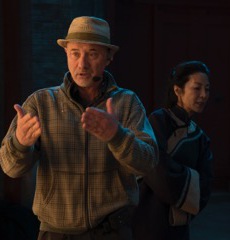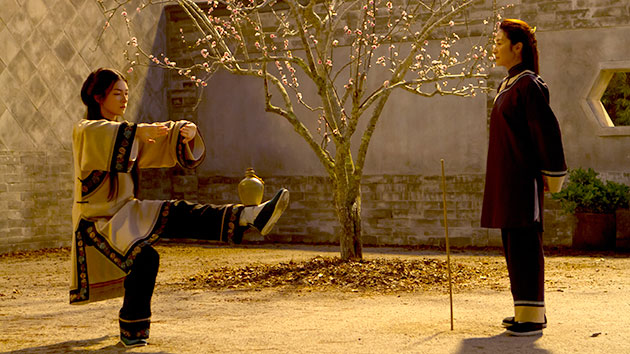
Given his resume, populated with major Hollywood action and visual-effects oriented fare including multiple X-Men films, one would think that lensing a real Hong Kong-style martial arts caper in the form of Crouching Tiger, Hidden Dragon: Sword of Destiny, the long awaited sequel to Ang Lee’s stylized and critically acclaimed 2000 epic, would be somewhat familiar turf for cinematographer Newton Thomas Sigel, ASC. In certain technical ways, it was, but the movie, shot in New Zealand and China and directed by Hong Kong legend Yuen Woo-Ping, the action choreographer responsible for the fight choreography on the original film, required subtle adjustments for Sigel as he dived deep into Hong Kong-style filmmaking for the first time.
Among them was the fact that the director, known on set as Master Yuen, spoke no English, meaning the two men had to invent a shorthand to collaborate effectively, Sigel explained when he spoke with Studio recently for the Podcasts from the Front Lines series.
“It was really about me watching during rehearsals and blocking,” Sigel says. “He had a very specific way of watching the scene so that I could tell where he wanted the camera, and what he wanted the camera to do. He didn’t get involved with lighting very much, though — from his style of filmmaking, he considers that something the cinematographer does. But he used certain key words, like ‘later, later,’ or he would find one-word ways to quickly communicate. So we found that shorthand pretty quick, and I always had his translator as a backup. But really, I found it was less about translating Master Yuen word-for-word as it was about listening and watching his hand gestures.”
Sigel adds that the style and aesthetic of the movie pays homage to Lee’s original epic, which played an important role in breaking the genre through to mainstream American audiences, but says there was a definitive effort to “make this more of a modern action film with larger-scale sequences,” and “a desire to move the film to a slightly different place in the genre.”
As such, his technical experience shooting Hollywood action films served him well on the project. But in any case, Sigel did not view his job as attempting to emulate Hong Kong style cinematography, per se, as much as to try and tell this particular story the way the filmmaker wanted to tell it. In that regard, he and Yuen therefore sought out different visual directions than what Ang Lee and acclaimed Hong Kong cinematographer Peter Pau pursued on the original film.
“From a lighting point of view, probably one of the biggest differences is that, in the [original movie], the stuff they shot on a back lot sort of monochromatically was kind of flat in terms of night material,” he explains. “Here, we gave night material a little more color contrast by utilizing lanterns and candles and physical lighting. So I think this film has a moodier, contrastier look than the original, but I would not say it is a radical departure.”
Crouching Tiger, Hidden Dragon: Sword of Destiny is a day-and-date release in theaters and on Netflix. To hear Sigel’s entire conversation with Studio about the experience, watch the video below or right-click here to download an audio-only version.
Sections: Creativity
Topics: Podcast Podcasts from the Front Lines Project/Case study Cinematography dragon martial arts newton thomas sigel Red yuen woo-ping
Did you enjoy this article? Sign up to receive the StudioDaily Fix eletter containing the latest stories, including news, videos, interviews, reviews and more.

Leave a Reply